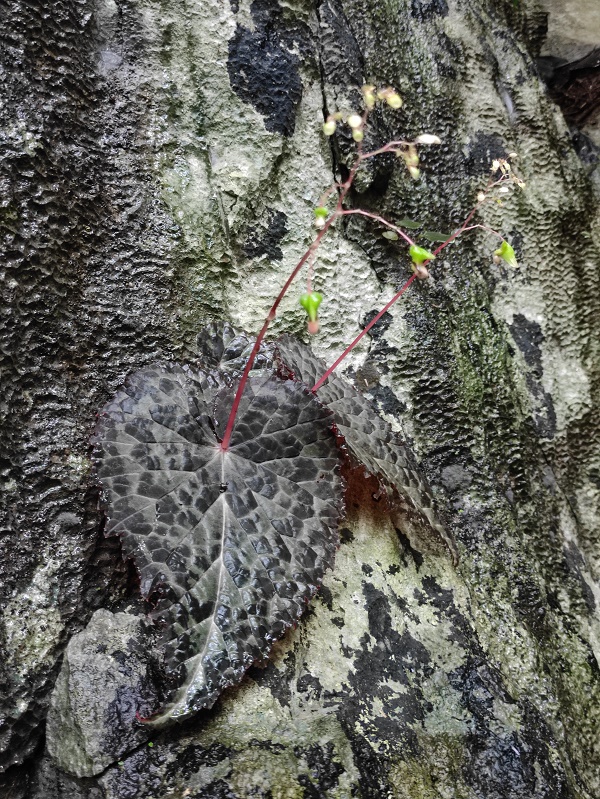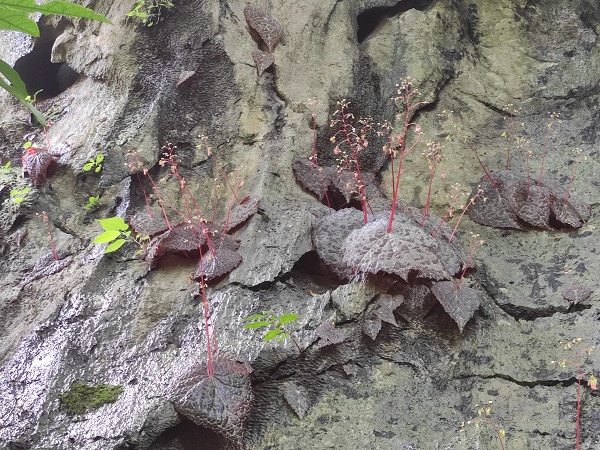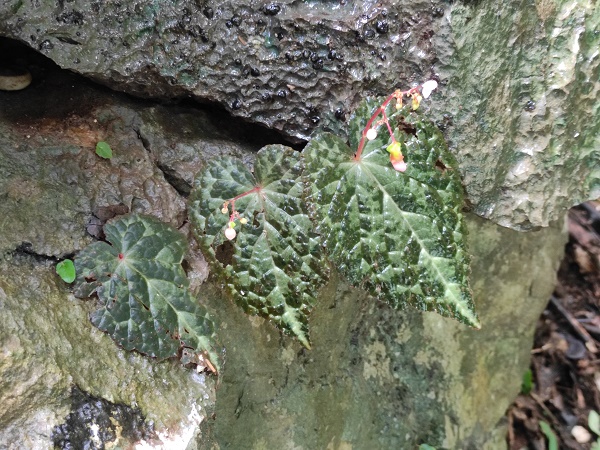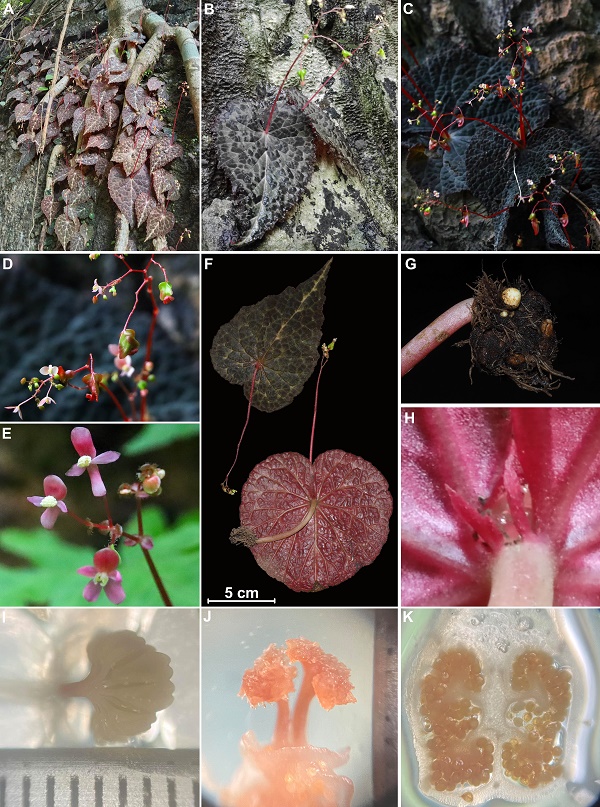Begonia (Begoniaceae) is one of the largest genera of angiosperms in the world. The northern and southern parts of Myanmar are likely to be the home for begonias with favorable conditions in climate, topography and vegetation. To date, 38 Begonia species are recorded in tropical and subtropical forests of northern Myanmar. However, the karst limestone areas of southern Myanmar are poorly known floristically.
In 2020, a researcher found an unknown Begonia species characterized by having sessile leaf and on this species. After careful examination of the morphology of the species by using the collected materials, color photographs, comparing with affiliated species and, reviewing the relevant literature and digitized herbarium specimens, researchers from Xishuangbanna Tropical Botanical Garden (XTBG) confirmed it new to science and was the fifth representative of the Begonia sect. Monophyllon A.DC.
The new species was named Begonia kayinensis referring to Kayin state where the type was collected. It was published in Taiwania on October 5.
Begonia kayinensis is a monoecious perennial herb. It is is morphologically similar to B. prolifera by having a globose tuber, unifoliate leaf, and free styles. But the new species can be easily distinguished by purplish-red to brownish-red bullate upper lamina, deep red lower lamina with prominent veins, lamina base cordate with overlapping lobes, margin repand or undulate-dentate, inflorescence paniculate, and pistillate flower pedicle with translucent hairs.
The new species is only known from Hpa-an District, Kayin State, southern Myanmar. It is distributed in the limestone hills and caves, namely
Yathae Pyan Cave, Mt. Zwegabin and its continuous limestone areas. It grows on shaded, moist limestone surface, exposed limestone and cave entrance at an elevation of around 80 m above the sea level.
The researchers considered its conservation status as Near Threatened (NT) according to the IUCN standard.
The Native Species Conservation and Identification, Myanmar (NSCI), a citizenship science initiative dedicated to documenting and conserving Myanmar’s biodiversity, contributed to collecting materials including in situ photographs, detailed locality information, potential threats to this species for an IUCN conservation assessment, and local knowledge about this species.
Contact
TAN Yunhong Principal Investigator
Center for Integrative Conservation, Xishuangbanna Tropical Botanical Garden, Chinese Academy of Sciences, Menglun, Mengla, Yunnan 666303, China
E-mail: tyh@xtbg.org.cn
First published: 5 October, 2023

Begonia kayinensis (Image by Min Khant NAING)

Begonia kayinensis (Image by (Image by Min Khant NAING)

Begonia kayinensis (Image by Khant Zaw HEIN )

Begonia kayinensis (Image by Khant Zaw HEIN )

Begonia kayinensis (Image by XTBG)





